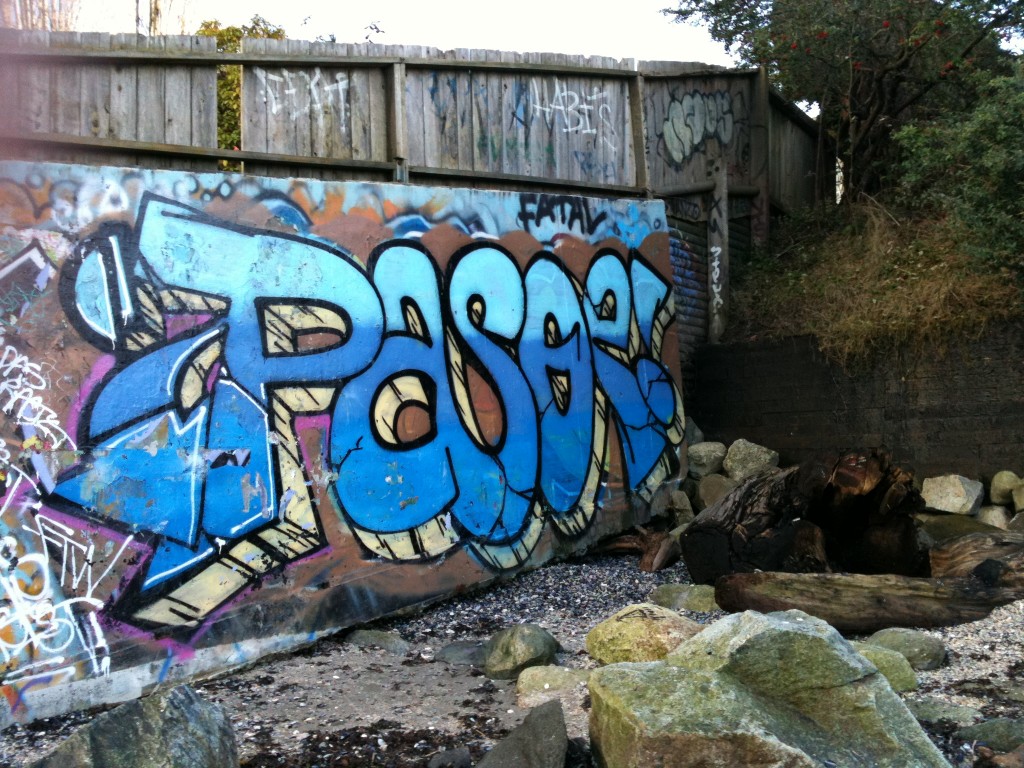 I love the temporality and changing accessibility of this location. In order to write here, you would have to time your arrival at low tide, and it is only visible either from the beach at low tide or out on the water. The only way to view it from above, and therefore from the million dollar Kitsilano homes under which the pieces appear, would be to exit your backyard, perch on the foot-wide seawall and look straight down. This is not somewhere that you pass by each day on your way to school or work, this is a place that you have to seek out.
I love the temporality and changing accessibility of this location. In order to write here, you would have to time your arrival at low tide, and it is only visible either from the beach at low tide or out on the water. The only way to view it from above, and therefore from the million dollar Kitsilano homes under which the pieces appear, would be to exit your backyard, perch on the foot-wide seawall and look straight down. This is not somewhere that you pass by each day on your way to school or work, this is a place that you have to seek out.
“Pasoe” tags are very common in Kits and Point Grey. As is often the case with any distinct and replicated graffiti art, once I was shown a “Pasoe” tag I began to see them everywhere. I’m fascinated by the idea of how well known an artist can be in an area or neighborhood (notorious) without necessarily being known as a person (anonymous). Halsey and Young talk about the act of writing graffiti as a way of connecting “self” to the “world”, and about the impact of recognition within the graffiti community as impetus to continue participating (Halsey and Young 2006:278). While “world” in this context can, and does, refer to shared public space, it can also be interpreted as the graffiti writing community. Within that world, the simultaneous existence of notoriety and anonymity contributes significantly to the uniqueness of graffiti art and its systems of recognition, reoccurrence and replication.
By Sj Kerr-Lapsley
Halsey, M and A. Young.
2006 ‘Our desires are ungovernable’: Writing graffiti in urban space. Theoretical Criminology 10(3):275-306

